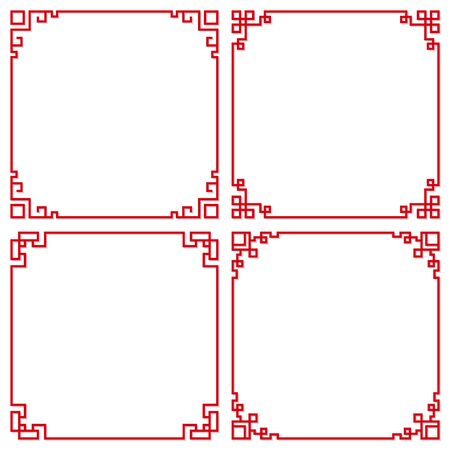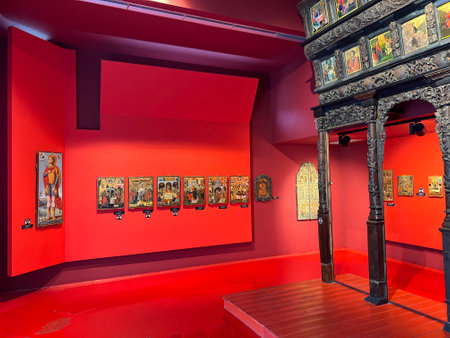Introduction: Mirrors in British Interiors and Feng Shui
Mirrors have long played a pivotal role in shaping the atmosphere of British interiors, weaving together both aesthetic and practical purposes. From the grand antique mirrors found in stately homes to sleek contemporary designs gracing modern flats, their reflective surfaces do more than amplify light or create the illusion of space—they also tell stories about taste, tradition, and evolving lifestyles. As British collectors curate their spaces with an eye for design, many are turning to the ancient art of feng shui to inform their choices. Rooted in Chinese philosophy but increasingly embraced in the UK, feng shui offers unique guidance on how mirror placement can influence energy flow, harmony, and wellbeing within a home. This article will explore how antique and contemporary mirrors fit into traditional and modern British interiors, while introducing key feng shui principles that every collector should consider.
2. Antique Mirrors: Heritage, Charm, and Energetic Legacy
Antique mirrors have long held a cherished place within British interiors, not only as decorative pieces but also as storied objects that echo the nation’s rich historical tapestry. The artistry of Georgian giltwood frames, Victorian bevelled glass, or Regency overmantel mirrors speaks volumes about the craftsmanship traditions cultivated across centuries in the UK. Each piece reflects its era’s aesthetic ideals and technical advancements—making antique mirrors veritable time capsules for collectors.
Historical Significance & Craftsmanship
From stately homes in the English countryside to elegant London townhouses, antique mirrors have adorned walls as status symbols and practical design elements. Their hand-carved frames and traditional silvering techniques are testaments to British artisanship. These mirrors were more than mere objects; they often signified wealth, taste, and social standing.
| Era | Common Features | Cultural Symbolism |
|---|---|---|
| Georgian | Giltwood frames, Rococo motifs | Elegance, enlightenment values |
| Victorian | Bevelled edges, ornate carvings | Opulence, industrial progress |
| Edwardian/Regency | Simpler lines, classical revival forms | Nostalgia for antiquity, social aspiration |
Cultural Symbolism in the UK Context
Mirrors in British culture have always been imbued with symbolism—reflecting not just physical appearances but also deeper social and familial legacies. Passed down through generations, these objects are repositories of memory and tradition. In grand country houses and quaint cottages alike, an antique mirror is often considered a family heirloom: a silent witness to countless gatherings and milestones.
Feng Shui Perspective: Energetic Legacy Considerations
For feng shui practitioners and collectors alike, antique mirrors present unique energetic considerations. In feng shui philosophy, every object accumulates “chi” or energy from its environment and past events. Antique mirrors may carry both positive resonance—such as the joy of celebratory occasions—and lingering negative energies linked to previous owners’ hardships or disputes.
| Aspect | Potential Impact on Chi (Energy) | Feng Shui Recommendation |
|---|---|---|
| Inherited Energy | Carries emotional imprints from the past | Purify with intention or sunlight before use |
| Mirror Placement | Affects flow of energy within modern spaces | Avoid facing beds or main entrances directly |
| Physical Condition (e.g., cracks, tarnish) | May symbolise stagnation or misfortune | Select well-maintained pieces; repair if possible |
The Balance of Heritage and Harmony for British Collectors
The allure of antique mirrors lies in their ability to bridge heritage and contemporary living. For British collectors mindful of both cultural significance and feng shui principles, honouring an antique mirror’s legacy while thoughtfully integrating it into one’s space can foster a harmonious blend of history, beauty, and positive energy flow.

3. Contemporary Mirrors: Minimalism, Innovation, and Qi Flow
Contemporary mirrors in Britain have evolved into more than mere reflective surfaces; they are now celebrated elements of interior design, shaped by the principles of minimalism and innovation. British homes often favour sleek lines, geometric shapes, and subtle frames that echo a modern sensibility while allowing versatility across a range of architectural styles. The popularity of frameless or metal-edged designs reflects a preference for simplicity and functionality, enabling mirrors to harmonise with both period properties and new builds.
From a feng shui perspective, these contemporary pieces offer unique advantages in guiding qi flow. Their unembellished forms minimise visual clutter, supporting a calm and balanced environment—a key tenet in both British interior tastes and feng shui philosophy. Large or strategically placed mirrors can amplify natural light in typically compact British homes, creating an illusion of spaciousness while encouraging positive energy circulation. The clean geometry found in modern designs is also believed to foster mental clarity and emotional equilibrium within living spaces.
Innovative British designers frequently experiment with materials such as smoked glass, antique brass, or eco-friendly composites. These choices not only align with sustainable trends but can be thoughtfully selected to complement the five elements theory central to feng shui practice. For example, incorporating metallic finishes might enhance wealth areas, while wooden accents support growth sectors. Thus, contemporary mirrors become tools not only for aesthetic enhancement but also for purposeful energy management in the British home.
4. Feng Shui Principles: Positioning and Orientation in British Homes
When it comes to integrating mirrors—be they antique or contemporary—into British homes, both feng shui principles and local architectural traditions offer valuable guidance. The optimal placement of a mirror is not only a matter of design but also an invitation for positive energy flow, balance, and harmony within the space. British properties, from Georgian townhouses to Victorian terraces, each possess unique spatial characteristics that influence how mirrors should be positioned for maximum benefit.
Understanding Spatial Contexts in British Architecture
Classic British interiors often feature fireplaces, bay windows, and high ceilings. In these settings, antique mirrors may be best placed above mantlepieces or opposite windows to reflect natural light, creating a sense of expanded space and brightness. Contemporary mirrors, with their minimalist frames or avant-garde shapes, can be strategically located to accentuate modern extensions or open-plan living areas without disturbing period features.
Feng Shui Considerations: Dos and Don’ts
| Mirror Type | Recommended Placement | Avoid These Locations | Feng Shui Reasoning |
|---|---|---|---|
| Antique | Above fireplace, across from garden views, entrance halls | Directly facing bed, directly opposite front door | Invites heritage energy and reflects beauty; avoid reflecting personal rest spaces or allowing energy to escape the home. |
| Contemporary | Dining rooms, near staircases (but not at foot), bright corridors | Facing cluttered areas, dark corners, bathrooms facing the toilet | Modern lines channel vibrant chi; avoid amplifying negative or stagnant energy zones. |
Cultural Sensitivity in Mirror Orientation
The orientation of mirrors should respect both British sensibilities and feng shui wisdom. For instance, placing a mirror so it reflects iconic elements like stained glass or original cornicing enhances a sense of history while multiplying auspicious chi. Conversely, avoid positioning mirrors where they double up messiness or reflect sharp architectural angles—this is as much a nod to tidy British aesthetics as it is to eastern energy flow philosophy.
Practical Guidance for Collectors
British collectors are encouraged to blend intuition with tradition: experiment with mirror placements during different times of day to observe changing light patterns and energy shifts. Always ensure that the mirror’s reflection brings joy—a beautiful vase of flowers or a sun-dappled garden view—rather than doubling visual noise or household clutter. In this way, both antique grandeur and contemporary flair can be celebrated within harmonious, chi-positive spaces throughout British homes.
5. Acquiring and Integrating Mirrors: Tips for British Collectors
Sourcing the Right Mirror: Where Tradition Meets Taste
For British collectors, the journey begins with sourcing mirrors that embody both authenticity and style. Antique markets in the Cotswolds or Portobello Road offer treasures from bygone eras, while contemporary design boutiques in London showcase cutting-edge creations. When selecting, consider provenance—a hallmark of true antiques is a documented history or a reputable dealer’s assurance. For contemporary pieces, seek out local artisans who understand both modern aesthetics and traditional craftsmanship, ensuring the mirror resonates with your personal taste and British sensibility.
Authenticating Your Find: Ensuring Genuineness
With antiques, authenticity is paramount. Examine patina, frame joinery, and glass clarity; genuine period mirrors often feature subtle imperfections and aged backing. Request certificates of authenticity from dealers or consult with restoration experts familiar with British decorative arts. For new designs, prioritise quality materials and reputable makers—many contemporary British designers now blend innovative techniques with heritage inspiration.
Harmonising Visual Appeal with Positive Energy
Integrating a mirror into your home goes beyond simple placement. According to Feng Shui principles adapted for British homes, avoid positioning mirrors directly opposite doors or windows, as this may disrupt energy flow. Instead, angle mirrors to reflect light into darker corners, enhancing both brightness and spatial harmony—an especially welcome technique in the UK’s often clouded skies. In period properties, place antique mirrors where they echo architectural features; in modern flats, let sleek designs expand small spaces without overwhelming them.
Practical Integration Tips for Collectors
Layer your interiors thoughtfully: an ornate Victorian mirror above a classic mantelpiece can anchor a room with historical gravitas, while a frameless contemporary piece might open up a compact hallway. Always clean mirrors gently using non-abrasive products to preserve their finish, and regularly check wall fixings—particularly in older British homes with lath-and-plaster walls. Ultimately, whether your choice is steeped in history or celebrates modernity, ensure it brings visual delight while fostering positive energy throughout your living space.
6. Conclusion: Balancing Tradition and Modernity through Feng Shui
For British collectors, the art of choosing between antique and contemporary mirrors is more than an aesthetic decision—it is a journey into harmonising heritage with modern living. By weaving feng shui principles into their selection and placement, collectors can celebrate both the craftsmanship of Britain’s past and the clean lines of today’s design. In practice, this means respecting the storied presence of an Edwardian gilt mirror while also embracing the understated elegance of a frameless contemporary piece. The key lies in thoughtful placement: position mirrors to attract natural light without reflecting clutter, and use them to symbolically double treasured views or features. With feng shui as a guide, British homes can become sanctuaries where tradition and innovation converse, each reflection telling a story that honours both legacy and lifestyle. Ultimately, it is this synthesis—rooted in cultural awareness and intentional design—that allows collectors to reflect their personal narrative while nurturing balance and wellbeing within their spaces.


